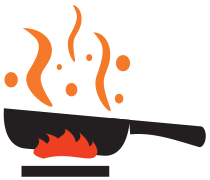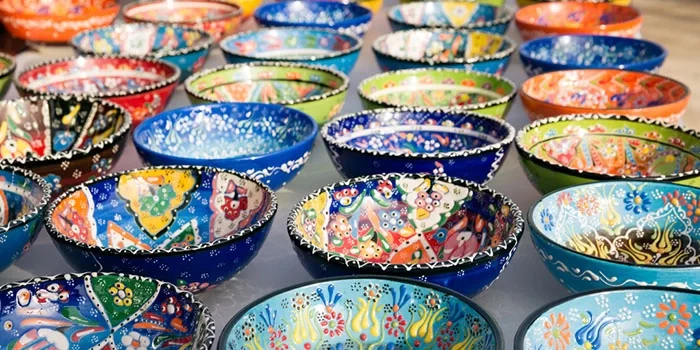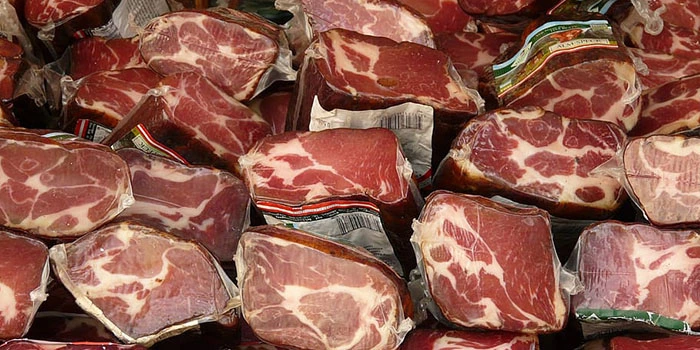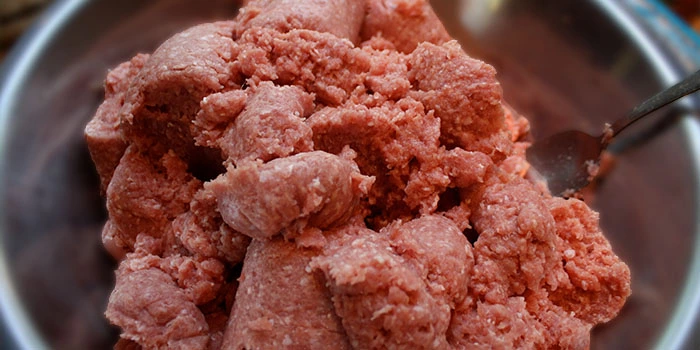You might be passionate about art. And your enthusiasm doesn’t stop at canvases. Or you might have taken the quote “The whole world is a canvas” too seriously.
As a result, you tend to put a mark on your work even on your kitchenware. But when it comes to painting, you can’t avoid acrylic paint.
As a matter of fact, you have confusion regarding is acrylic paint food safe?
Well, no, acrylic paint is not food safe. If it somehow gets heated up, it mixes with the food. And the taste is gross. It feels thick and bitter on your tongue. And if you eat it, it won’t digest easily. In severe cases, you might end up with food poisoning or diarrhea. But applying a layer of food-grade sealant can make acrylic paint food safe.
So to know how you can do it, be with us. And we will explain how you can make acrylic food safe. Along with it, we’ll show the alternatives to acrylic paint.
Why Is Acrylic Paint Unsafe?- 3 Reasons!
So you may love painting a lot. And when it comes to painting, acrylic paint is one of the best choices. Its quick absorbency and easy to paint qualities make it popular among painters. But only on canvases.
When it comes to painting kitchenwares, we discourage using acrylic. And here’s why-
Bitter Taste
The first thing is taste. Acrylic paint is made with chemical mixtures and pigments. And let us assure you, none of these are organic or natural.
If consumed, you’ll have a thick layer of paint on your tongue. That’ll feel really heavy. And the taste is way bitter than dark chocolate. In some cases, you might even know how to make your dark chocolate less bitter. But you won’t be able to make the acrylic paint any less bitter.
And you would literally feel like you’ve consumed one of Snape’s magic positions. Except there’s no way to reverse the magic.
So we suggest you not consume it by any means. Now you might think how are my painted plate or cups leading to consumption?
When you paint a porcelain/ceramic plate with acrylic paint, it comes off when heated in the oven. Or even with the hot food you just put on it. Thus it mixes with the food and ends up in your stomach.
Wondering if it gets to the stomach, will you be able to digest? Well, look for the answer just below.
Digestibility Issues
So even if some paint ends up in your stomach, there’s no way it will be digested. But will definitely make you suffer for a long time. Think of yourself as blessed if you only get away with a stomach ache.
Wondering why would we say that? Because the worst case is diarrhea or food poisoning. Once the food poisoning hits you, you’re NOT getting well in a week.
So we suggest you avoid it getting to your tummy by all means. Because once it gets there, things will be pretty serious. And when it gets to the stomach, it’s hard to digest. And why is that?
Because it has elements that are toxic to human health.
Toxicity Issues
Let’s talk about toxicity. Most of the acrylic colors are claimed to be non-toxic. By this, you can understand that there are two types of acrylics- toxic and non-toxic.
But do not get too excited by the non-toxic criteria. Because we didn’t say food safe. That means being non-toxic still doesn’t make it worthy of consumption.
Just imagine what damage it can do to your body once you eat it somehow. Even if you’ve consumed some, see what you need to do. And by that, you can understand that toxic acrylics are dangerous as well as non-toxic ones.
What To Do If You Accidentally Eat Acrylic Paint?
If you’ve somehow eaten acrylic paint, the first thing we ask you to do is relax. Don’t just overstress and make things worse. What you need to do is find the acrylic paint. Then check if it’s toxic or non-toxic.
If it’s non-toxic, first take your mouthwash. And gurgle out any remaining particles of paint in your mouth. Now drink some water. Have a snack so that it reaches the stomach. And pray that it digests easily.
But be prepared for the consequences. You’ll see reactions like skin allergies and stomach aches.
By any chance, if you’ve consumed toxic acrylic paint, the consequences are severe. Because there can be an instant reaction to the chemicals. Or you might have diarrhea or food poisoning.
In any case, do consult a doctor as soon as possible. Just follow the doctor’s instructions.
One tip is that do not use any chemicals like acetone to remove paint from your hands. Just wash your hands with soap and water. And the paint will come off. Then you can eat with your clean hands.
How To Paint With Acrylic To Make It Food Safe? 3 Steps
You know that acrylic paint is not food safe. But we haven’t said that it can’t be made food-safe, right?
So go through these easy steps to make your acrylic paint food-safe. And you won’t have to worry about the above-mentioned factors.
Step 1 Of 3: Paint The Porcelain Or Ceramic
The first thing of course is to paint the plate or cups. Pretty interesting work to do, right? Yes, we know that exactly how fun it is.
So time to bring out your inner artist and start painting your heart out. Once you’re done painting, let it sit overnight.
The time may vary depending on the surface you’re painting. But overnight is the highest limit. But you can check after 12 hours to see if it has dried or not. Or you can speed up the drying process by turning the fan on.
Don’t turn the fan immediately after finishing the painting. Because the paint will still be runny and airflow can mess it up.
Step 2 Of 3: Bake The Painted Kitchenware
Now it’s time to break some eggs, buddy. To start, put your painted kitchenware in the microwave. And heat it for 2 minutes.
Now put the kitchenware out and let it cool down. The cooling process might take 10-12 minutes maximum.
But if you check whether it’s baked entirely, bake again. But this time, set the timer to 1 minute. And then cool again. Never touch the kitchenware barehanded after baking it. You can use your kitchen gloves to help you with the process.
We have been quite fond of these gloves. And ever since they’ve been a part of our pantry. Wanna check them out?
-
Reusable Dishwashing Cleaning Gloves with Latex free, Cotton lining ,Kitchen Gloves
-
Mamison 2 Pairs Reusable Waterproof Household Dishwashing Cleaning Rubber Gloves
After putting the gloves on, you’ll be well protected from getting burned.
Step 3 Of 3: Apply Food Grade Sealant
Now it’s time to apply the topcoat, which in this case is the food-grade sealant. And this is when the game changes.
Yes, this is the step where you turn your non-food grade kitchenware into a food-safe one. So yes, just by adding a sealant the magic happens. One layer above the paint will seal it. And it will remove the dangers that we mentioned before.
After applying the sealant layer, wait for 1-2 hours for it to dry up. Once it dries you will be able to use the plates and cups as usual. But we suggest waiting another day before you serve food on that plate.
Also, clean the kitchenware normally before putting food on them.
Food Safe Alternatives For Acrylic Paint- 4 Options
If you still don’t want to go with acrylic paints, don’t worry. Because we got something for you. Here’s a list of alternatives that skipped the flaws of acrylic.
Edible Color Spray
While thinking of painting the plates and cups, nothing can be better than edible color spray. You might have seen people coloring their foods with these sprays to make them look fancy. In the same way, you can paint your glassware.

This way, you can decorate as well as eat the paint with food. Interesting right?
Well then see the next one.
Pearl Dust/Metalic Food Color
Another decorative method is using pearl dust/metallic food color. Pearl dust is glitter dust but 100% edible. Both metallic color and pearl dust are used for decorating cake fondants.

They could also be used to decorate your plates and cups. For example, take a plain white plate. Now place one fork and knife like an “X”. Now sprinkle the pearl dust over the spoon and knife.
It’s time to gently remove the fork and knife. Once you remove them, you’ll see the pearl dust in the shape of a fork and knife. Now add your cupcake or cookie beside that. It will bring them to life.
And this aesthetic decor will stunt your guests.
Melted Chocolate/Caramel
Yes, you’re reading it right. Melted chocolate or caramel can be a quick dessert decor for you. All you need to do is melt some chocolate on your stove. Now take some with a spoon and design in any way you like.

Or you can take some to your kitchen brush. And brush one corner of the plate with the melted chocolate. Put the food on another side. The same goes for caramel as well. If you were about to fix caramel that’s too soft, don’t bother. Because that can be used as decor too.
Or you can harden some homemade sugar caramel. When it’s quite thick, take it on a spoon. Spread it on parchment paper with different shapes. Wait for 15 minutes. Now remove the hardened caramel from the parchment paper.

And side the hardened caramels with your dish.
Edible Gin Paint
Now here’s something amazing for you. Have you seen bartenders giving their touch of expertise on your glass of gin? If yes, you might have noticed that they use a special type of paint to decorate the glass. And that sometimes mixes with the drink.

That paint is actually edible gin paint. So if you’ve set your mind for decoration, it’s worth giving try. The paint comes with a brush. So all you need to do is paint as you like.
You can choose any of the mentioned alternatives to decorate your kitchenware. All of them are quite affordable. And easy to paint or decorate with.
FAQ’s
Shellac is known to be a food-safe sealant. It has properties that seal the acrylic under it. But the upper layer is all safe.
Yes there’s acrylic food sealant. That’s not certified by the FDA. But it claims to be non-toxic and non-harmful to humans. But still, we prefer food-grade sealants.
Yes, food-grade sealants come in different colors. The most popular one is the transfer food sealant. But there are red, white, and black sealants as well.
Bottomline
So looks like you got answers to is acrylic paint food safe. And you got to know how to make it food safe along with alternatives. A lucky day for you, I guess.
Well, do let us know what you decided to do with the knowledge. And if you end up with decorating, do share pictures in the comments below.
Good luck and thank you!





